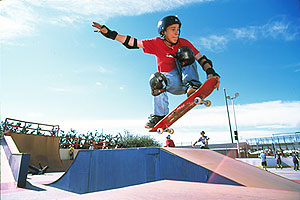http://www.angelfire.com/ab/brightminds/tNeeds.htmlNEEDS, WANTS AND BEHAVIOUR
Basic human needs
Total behaviourChanging how I feelBASIC HUMAN NEEDS
As human beings we have many needs, which can be grouped under five headings:
Belonging and Love.
Power.
Freedom.
Enjoyment, appreciation, fun.
Safety and Survival.
When our life is out of balance we can look at these needs and assess whether one or more of them is being frustrated. If so, we can focus on things we can do, that are within our control, to bring about a better balance. These do not have to be major things. Here is a list of the major needs and examples of how we might meet them:
BELONGING & LOVE
Giving & receiving love; being part of something; belonging to groups; someone to talk to; receiving attention; sharing experiences; supporting teams, political parties; work; chatting; greeting.
POWER & ESTEEM
Self-esteem; esteem by others; power; achievement; worthwhileness; competing; confidence; winning.
FREEDOM
Space; spreading my wings; elbow room; time to myself; independence; autonomy.
ENJOYMENT
Fun; pleasure; appreciation; laughter; games, learning.
SAFETY & SURVIVAL
Food; shelter; health; sex.
DIFFERENCES
As you can see from the list, there are many ways to meet our needs. We can think of the things we want as ways of meeting our needs, effectively or ineffectively. We all need to eat but I want a steak and you want a pizza. Not only do our wants often differ but the details of our wants are very specific. I want a sirloin steak, medium, in a black pepper sauce; you want a deep-filled ham and mushroom pizza with no peppers. I want a socialist government which will pay for social services for people on low incomes; you want a capitalist government which will cut welfare and taxes. To the extent that we can respect the fact that other people - including those nearest and dearest to us - want different things than we want, we can live in harmony. If we cannot respect these differences, then we must live in conflict.
To get what we want, we behave. We are engaging in one behaviour or another from the time we are born to the time we die. But this behaviour has components and when these are put together we can think of them as constituting Total Behaviour.
BACK TO TOPTOTAL BEHAVIOURAt any time, four things are happening for us: what we are doing, what we are thinking, what we are feeling and what is going on in our bodies.
Sometimes these activities work in harmony. For instance, if we are pleased we may be smiling (doing), thinking positive thoughts, feeling content and physically relaxed. If we are angry we may be shouting (doing), thinking angry thoughts, feel that we are in a rage and have our hearts beating quickly and our muscles tensed up.
Often, the four activities are going in different directions. If you are sitting in a dentist’s waiting room and you hear the drill starting up, your feelings may tell you to run but your thinking may tell you to stay. Your body may be tensed up with heart racing and adrenaline pumping. And what you are doing may be thumbing idly through an out of date copy of Hello! magazine.
You could say that at any one time we are behaving in each of these four ways: feeling, thinking, doing, physiology. We can call this combination our Total Behaviour. If we can change one of these, then we have a good chance of changing the others.
It is hard to change our feelings directly. It is easier to change what we are thinking and easiest of all to change what we are doing.
So the golden rule is: if you want to change how you feel, begin by changing what you are doing or what you are thinking.
Easy to say and hard to do? Yes! Let's look at it a little more closely.
BACK TO TOPCHANGING HOW I FEEL Consider the four components of behaviour: Doing, Thinking, Feeling, Physiology.
Which do I focus on moment-to-moment?
I always know how I feel but if feelings are my moment to moment guide to what to do next I may be in difficulty: if I feel angry I may lash out at someone or I may become depressed to suppress the anger.
Moreover, if there is something I need to do, I may make the mistake of waiting until I feel right about it before I do it. Suppose there's an important phone call I have to make but which I never actually feel like making when the time comes to do it. If I am led, on a moment-to-moment basis, by how I feel, there is a good chance I will never make the call, or that I will postpone it until I am in trouble and cannot put it off any longer.
But I can change my focus so that I am purpose-led instead of feelings-led. I am still very aware of my feelings - they are the warm, beating heart of my life - but my purpose is my moment to moment guide and my orientation is towards doing.
So now I make my telephone call, even though I don't feel like making it at this particular moment. With the phone call made, I - hopefully - feel relief, a return of energy, perhaps even a litttle elation.
Paradoxically, by focussing on what I can do rather than on what I feel, I arrive at a point where my feelings become pleasant and positive.
Another example: if I feel tired and tense and stressed and I go for a brisk, ten minute walk, even though I don't feel like it, I am like to have more energy and to be in a better mood afterwards. Here I have done something (gone for a walk) which has changed my physiology (increased energy) and now I feel better.
Sometimes the good feeling takes longer to arrive. If I am grieving over the end of a relationship or over a death, I will, hopefully, get to the point where I am doing things I want to do - seeing friends, taking a break and so on - but it may be a long time before this "feels" right and before I start to feel good. But I will get there, if I have the courage to keep working at it - and it will help greatly if I have friends to help me along the way.
This raises an important point about the things we want. Sometimes I cannot move ahead unless I change what I want.
Suppose I want the renewal of a relationship and that I want this more than anything else, but that I know it simply isn't going to happen.
For a time, part of the pain I am in comes from wanting something I can never have or can never have again. This wanting and this pain is part of grieving. In time, I must come to wanting somebody or something else in place of what I have lost. If I persist in wanting the person I have lost, I must be prepared to reduce the importance of that want to me - I must allow other wants to take priority.
So in order to bring about change in our lives, we must do something different or change what we want. If I want to be a good athlete but I spend my mornings in bed, I must change what I do - get up and start running instead of snoozing - or change what I want - perhaps decide that what I really want out of life is to be a couch potato.
Notice that doing something different involves a change in thinking - instead of thinking, "I must have this," I decide (and making the decision is also a form of thinking) that "I will settle for that."
Our thoughts are somewhat under our control. They wander off on their own every few minutes (if not every few seconds!). But often we need to be willing to change what we think in order to change what we do.
Sometimes, however, our emotions are so strong - with grief or depression for instance - that all we can change is what we do, and even our thoughts have to follow afterwards.
BACK














